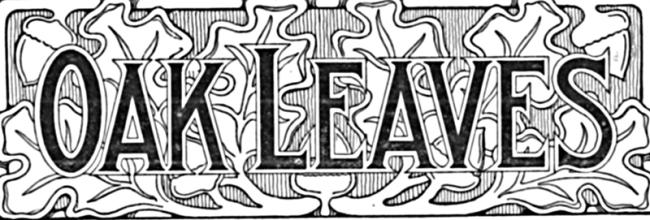On Dec. 30, 1903 more than 2000 people were packed into the matinee performance of Mr. Blue Beard at the five week old, “absolutely fireproof” Iroquois Theater. A fire that broke out on stage during the second act took the lives of over 600, at least 150 of them children.
In 1903 a thriving theater community was challenging New York. Opening of the French renaissance showplace had been delayed by inclement weather and labor strikes. Many shortcuts had been taken; the Iroquois building really was not completely finished when it opened in November.[i]
The first show, with family appeal, was not filling the 1600 seats but the managers had high hopes for the Christmas season. In the audience that fateful day was George Leach, freshman at OPRF High School. In January 1904 the Tabula published his account of surviving the fire.
He took a seat in the balcony and “… noticed of what a jolly crowd the audience was composed, a crowd full of holiday humor and bubbling over with mirth.” Like most of the audience he thought the first small yellow light of the fire was another of the many colored lights used in the play.
Also like most of the audience, he stayed in his seat as burning pieces began to fall on the stage, until “… it seemed foolish to stay there any longer.” He even went down to the check room to get his hat and coat “… which fact shows that I had gotten the start on the crowd in the first balcony.” After getting his coat “The shrieking and hollering of women and children had become the chief noise…” After getting outside he saw “… the wounded carried out… Next came the dead, one after another was carried out of that terrible hole of death and laid on the sidewalk like so many sacks of flour…”[ii]
Among the Oak Park residents who died was Nellie Dawson, a teacher at 64th Avenue elementary school in Oak Park[iii], who survived for nine agonizing days before passing. Nellie’s mother and five year old niece, of Barrington, died in the fire.[iv]
When Ralph Skillin of Oak Park passed away in 1968 the Oak Leaves said he was the last survivor. But Mabel A. Knapp of River Forest wrote the paper that she and her family escaped, while eleven girls in her Englewood High School class perished.[v]
Almost everything in the theater was flammable; exit doors were hidden behind curtains, opened inward, or were locked after the show started; there were no sprinklers or other safety equipment. Public and press cast blame on Mayor Harrison, the fire chief and lieutenants, the building commissioner, and the theater’s owners, architect, and building contractors. After conducting an inquest the city coroner declared that those found guilty would be brought to justice. That never happened.[vi]
Around thirty Iroquois Theater victims are buried at Forest Home cemetery in Forest Park. Two victims are buried in Concordia cemetery.
[i] Hatch, Anthony P., Inferno at the Iroquois, Chicago History Fall 2003
[ii] Undated copy in Historical Society file
[iii] Later renamed Hawthorn and then Percy Julian
[iv] http://www.iroquoistheater.com/three-barrington-illinois-dawson-family-iroquois-theater-victims.php
[v] Oak Leaves/Forest Leaves, July 10, 1968
